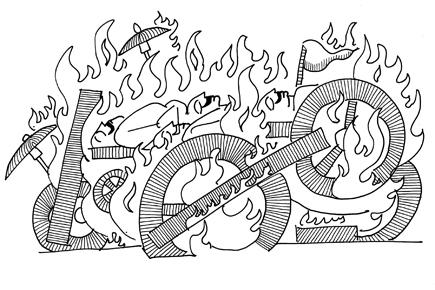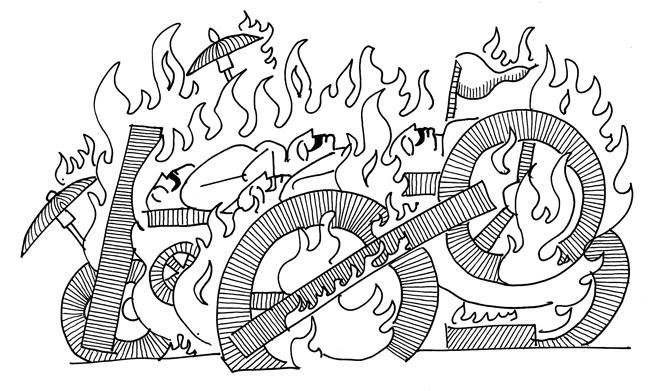On the Internet, a standard acronym appears when a statesman dies: RIP. It means rest in peace

RIP
 On the Internet, a standard acronym appears when a statesman dies: RIP. It means rest in peace. RIP reveals that even in modern times we want to believe that after death there is something that needs ‘rest’ and ‘peace’. That death is not a full stop. This is an indicator of absence of scientific thought, and a belief in the idea that something outlives the death of the body.
On the Internet, a standard acronym appears when a statesman dies: RIP. It means rest in peace. RIP reveals that even in modern times we want to believe that after death there is something that needs ‘rest’ and ‘peace’. That death is not a full stop. This is an indicator of absence of scientific thought, and a belief in the idea that something outlives the death of the body.
ADVERTISEMENT
There is, as yet, no scientific proof that something survives death. All religious and occult views on soul, spirit and ghost remain personal opinions. RIP is essentially an expression of subjective truth, not objective truth, an imagined reality or myth that many subscribe to, whether they are religious or secular.

Illustration / Devdutt Pattanaik
Animals do not say RIP. They do not have the wherewithal to imagine such realities. Some animals mourn their loss, briefly, and move on. No one builds tombs and holds memorial days. Death for animals is a reality. For humans it is a mystery. And we use elaborate stories to structure this mystery.
RIP has its roots in Christian and Islamic mythology, where after death, the spirit waits in purgatory till the end of the time: Judgment day (qayamat) in Islam, and Second Coming of Christ in Christianity. Then the faithful will rise to heaven. Until then, we hope the dead rest in peace. This concept of afterlife can be traced to Greek mythology and before that Egyptian mythology. Chinese believed in the land of ancestors, to which the dead departed. In some cultures, dead kings and sages become gods and guardian spirits of the living. In some cases, the dead refuse to go into afterlife and stay back as ghosts, troubling and tormenting the living. That is when you call ghost-busters.
Indian mythologies — Buddhist, Jain, Hindu — believe in rebirth. There is no concept of resting, but there is constantly hope for peace (shanti). The soul is always travelling, reborn again and again and we hope in a future life finds so much wisdom that there is no need to be reborn. In these mythologies, birth is an outcome of a quest. Life is about coming to terms with how the world functions.
The burning of bodies and throwing bones in water is meant to remind Hindus that the body does not matter. In cultures where there is belief in one life, the body is embalmed and entombed, facing the direction of God, so that it rests in peace. In ancient Egypt, the direction of afterlife was the West; in Christianity it became the east, the direction of the rising sun; in Judaism it was Jerusalem; in Islam it was Mecca. Hindus make the corpse body face south, the direction of Vaitarni, across which is the land of the dead, Pitr-loka or Yama-loka, from where everyone eventually returns. The truly wise do not go there at all. In Buddhism, they just cease to be.
Coming to terms with natural reality is tough. The human imagination wants the world to function in a particular way. We want the word to have equality and human rights and justice and fairness. We genuinely believe wealth and power and true love will solve our problems. We pursue them relentlessly. We fail but we continue to strive, convinced we are martyrs to the cause, heroes of the revolution. Nature continues rolling on, indifferent to our passionate screams and self-indulgent selfies. We seek peace in material terms and overlook the fact that peace is merely a psychological reaction, not an objective fact but an aspiration of the human mind. Peace is not an outcome of cynicism. It is a joyful celebration of human inadequacy.
The author writes and lectures on relevance of mythology in modern times.
Reach him at devdutt@devdutt.com
 Subscribe today by clicking the link and stay updated with the latest news!" Click here!
Subscribe today by clicking the link and stay updated with the latest news!" Click here!






